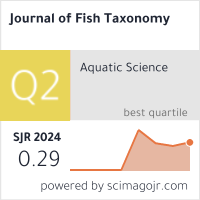Cryptic Species Identification in Marine Flatfishes Through Genetic Barcoding
Keywords:
Cryptic Species (CS), Marine Flatfishes (MF), Genetic Barcoding (GB), Identification (II)Abstract
The current paper discusses the growing biological issue of "cryptic" species. For species with substantial genetic
variety but little morphological variation, a cryptic species notion was recently put out. In order to identify three
new species and illustrate their dual nature, we use special material from a fascinating group of nudibranch
molluscs of the genus Trinchesia from European waters as a study in itself. Each species in that complex has
stable morphological and molecular distinctions, but their overall similarity can be determined as a "cryptic"
species complex. This species complex may therefore be referred to as "cryptic," "pseudocryptic," or "non
cryptic." We further link the species problem to epigenetics and provide evidence for a very high rate of speciation
in this species complex. When a finer multilayer morphological and molecular scale is employed to uncover more
accurately defined species, the "cryptic" addition to "species" is no longer essential because the degree of
crypticity is a continuum. This is supported by the broad discussion of the available metazoan-wide data in the
current study. Molecular and morphological approaches should be used to create a fine-scale multilevel
taxonomic framework. This does not necessarily mean that purely molecular-based "cryptic" species will be a
posteriori transformed into morphologically defined "pseudocryptic" ones. The current study's implications are
significant for various disciplines, such as fine-scale biodiversity assessments and conservation biology.








